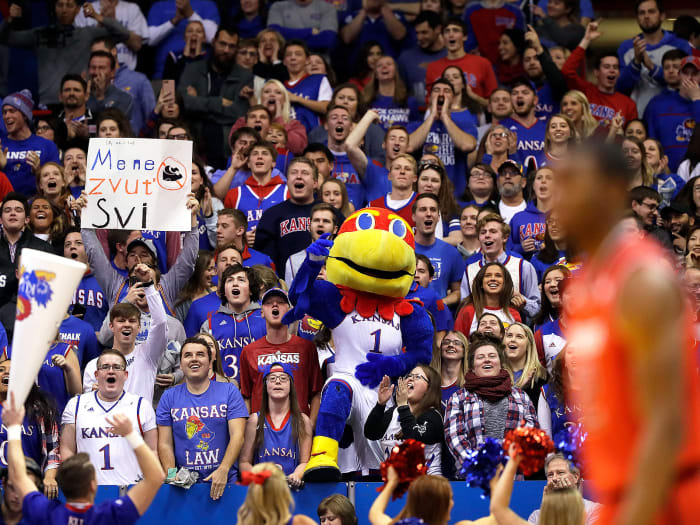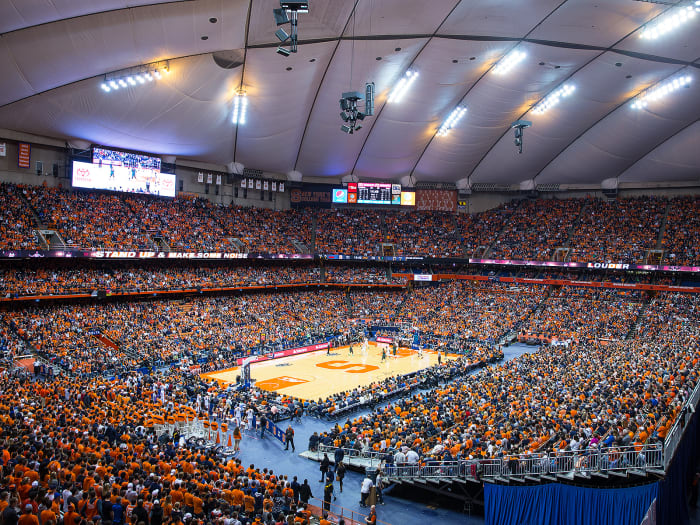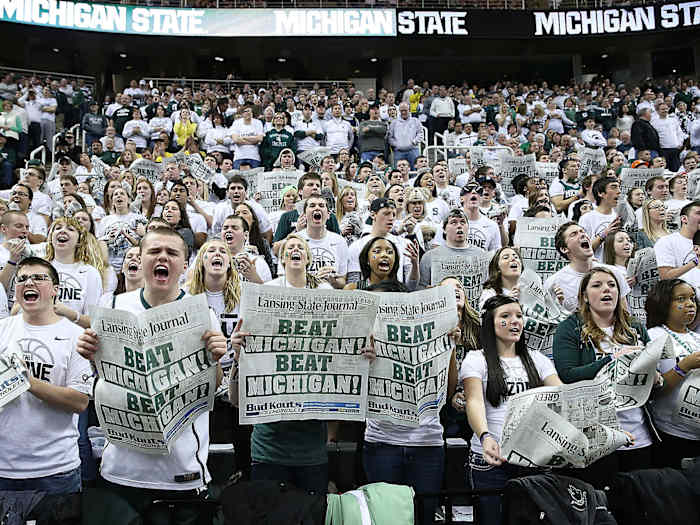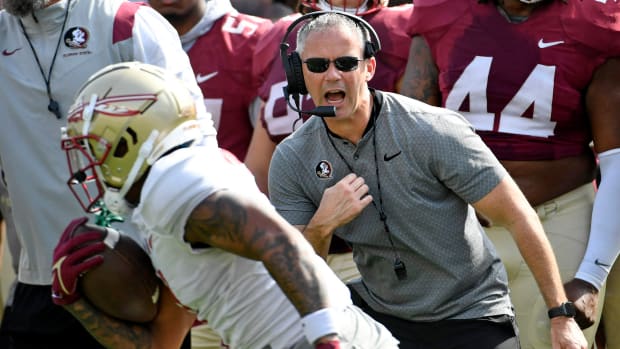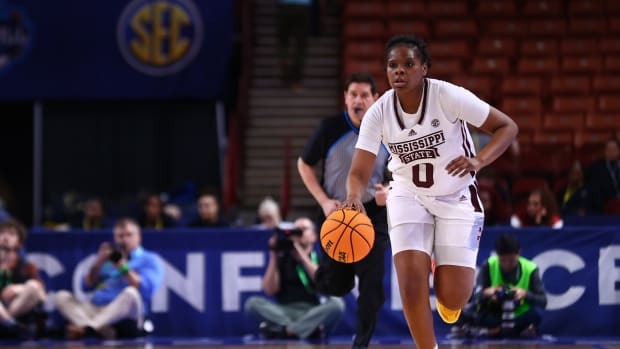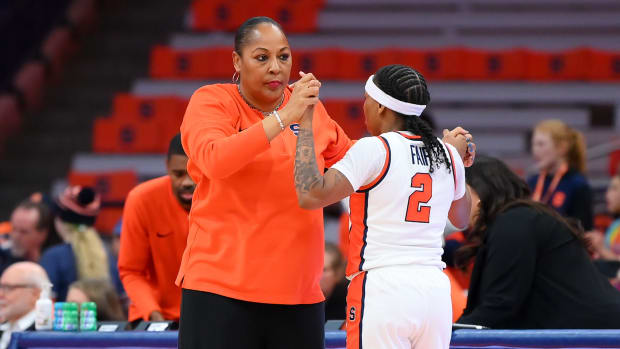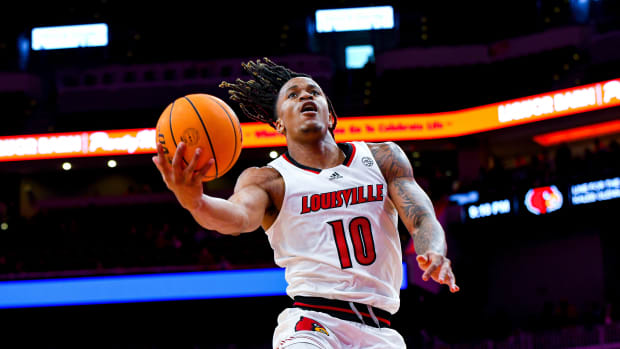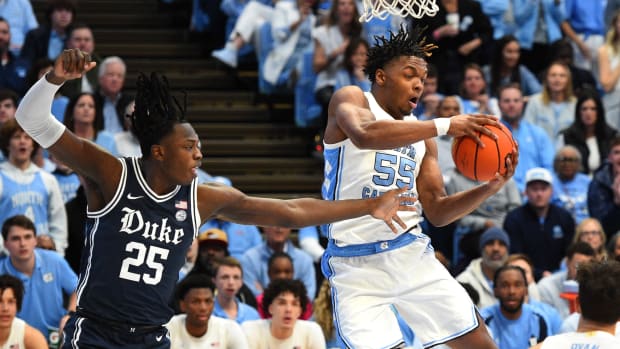The Top 10 Toughest Arenas for Opponents in College Basketball
Is there any major sport that can create a home-court advantage like college basketball? As compiled by Collegiate Basketball News, the median winning percentage of the 351 Division I men's teams in their current arenas is 67.7%, with 144 of those 351 schools having a winning percentage over .700. Only 14 D-I men's teams have won less than 50% of their games in their current homes. So it's clear that playing at home can make a big difference in college hoops, especially when you have dedicated fans and can pack an arena.
With this in mind, we polled our college basketball staff and asked them to rank what they feel are the 10 toughest places in the country for opposing teams to play. Like we did for the top 10 upsets of the last decade and the 10 best uniforms in college hoops, we arrived at this overall top 10 ranking by averaging the responses, with more weight given based on the 1–10 scale. Honorable mentions are at the bottom.
1. Cameron Indoor Stadium (Duke)
The fearsome and historic Cameron Indoor, which opened way back in 1940, earns the top spot on our list. It’s no doubt in large part due to its dedicated and famous student section, dubbed the “Cameron Crazies.” The group is known for many things, including camping out in Krzyzewskiville, covering themselves in blue and white paint and taunting opposing players with signs, chants and their signature move where the entire student section reaches out an arm while an opposing player is inbounding the ball. The 9,314-person capacity at Cameron is far smaller than many of Duke’s blue blood competitors, but it makes for a tight, cramped and electric atmosphere—especially when that team in Carolina blue comes to town.
2. Allen Fieldhouse (Kansas)
How loud does it get in The Phog? Ask West Virginia, who was present on Feb. 13, 2017, when the 16,300 in attendance set the Guinness World Record for the loudest crowd roar at an indoor sporting event (130.4 decibels). The Jayhawks won that night, just as they do so often on their home floor. Kansas has a lifetime 774–114 record at Allen Fieldhouse, which works out to a .872 win percentage going back to 1955. In the last five seasons, the Jayhawks have only lost five times total in Lawrence—three of which came in 2017–18.
3. Rupp Arena (Kentucky)
The home of the Wildcats has packed in as many as 24,000 for basketball games, despite the official capacity being listed as 23,500. It makes it the largest arena in the country that is used only for indoor sports, and when you combine that with the success of the Wildcats you get a nightly crowd that’s always ready to rock. Kentucky has won 89.5% of its all-time games at Rupp and has only lost eight of the 132 games it has played there under John Calipari, to give you an idea of just how much of a home court advantage the Wildcats enjoy. Their fans have also led the country in average attendance in each of the last three seasons.
4. McCarthey Athletic Center (Gonzaga)
“The MAC,” or even more commonly, “The Kennel,” is even smaller than Cameron Indoor, with a capacity of only 6,000. Like in Durham, the small confines in Spokane give the arena an intimidating feel for opponents, especially when the focus is a raucous student section. That atmosphere, combined with the rise of the Zags as a program, has helped the team compile an astounding .924 winning percentage at McCarthey, losing only 16 times since its opening in 2004. The only team that seems to have cracked the code to succeeding there is BYU, which had won three straight in The Kennel before Gonzaga knocked the pesky Cougars off this past February.
5. Assembly Hall (Indiana)
Dubbed “the Carnegie Hall of College Basketball” by legendary announcer Gus Johnson, Assembly Hall is known for its steep side seating and the Hoosier-crazy fans that fill it. Opened in 1971, the arena has seen great success over the years, including 576 Indiana wins that power an .834 winning percentage. And, of course, it witnessed much of the Hoosiers’ 1975–76 undefeated season—the last perfect season in men's college hoops. With the largest student section in the country at 7,800 seats, Assembly Hall is far from a friendly site for opponents when it’s rocking.
6. “The Pit”: Dreamstyle Arena (New Mexico)
New Mexico has taken a step back in recent years after making four of five NCAA tournaments from 2010 to ’14, but opponents would never be wise to underestimate The Pit. The Lobos have won a whopping 732 home games since the arena’s opening in 1966, with their fans making it a daunting place to play. One of The Pit’s legendary moments came back in 2010, when San Diego State’s D.J. Gay was fouled shooting a three with his team down two and one second remaining. He missed one of the three free throws as the game went to overtime, where New Mexico prevailed.
“I remember getting to the line and it was so loud my ears started to hurt, and I think for a split second I lost my focus,” Gay would later say of his miss.
Now that’s what you call home court advantage.
7. Carrier Dome (Syracuse)
The Carrier Dome is one of the most unique settings in college basketball—and, because it doubles as a gridiron, in football as well. It’s the largest domed structure on a U.S. college campus and can hold over 35,000 for hoops games, as it did for a February 2014 game against Duke where it set the arena’s record for an NCAA men’s basketball game. The unusual setting can give the Orange an advantage over opponents who aren’t used to the dome’s confines—or size—helping Syracuse win 83.1% of its games in the arena’s history.
8. Breslin Student Events Center (Michigan State)
Home of the “Izzone,” the well-known Michigan State student section (named after—you guessed it, Tom Izzo), the Breslin Center is always a tough trip for opponents to make. The Spartans have won 86.9% of their home games since the arena opened in 1989, as the fans in East Lansing have given a team that is annually among the sport’s elites a further advantage. Even when MSU lost an uncharacteristic 15 games in the 2016–17 season, only two of those came at Breslin, and it dropped just one game all year at home last season.
9. Cintas Center (Xavier)
Since the Cintas Center opened in 2000, Xavier has been one of the most remarkably consistent programs in college hoops, missing the NCAA tournament only twice in that span. Its crowds have reflected that, with the 10,250-seat arena being either at or near capacity night in and night out for the Musketeers, creating a hostile environment for any opponent hoping to come in and leave with a W. In fact, only three teams in the country have a better home winning percentage in their current arena than Xavier: Gonzaga, Oregon and Kentucky (though Kansas is right on the Musketeers’ heels).
10. Hilton Coliseum (Iowa State)
Any opposing team that steps into the arena in Ames, Iowa, has to deal with the looming threat of “Hilton Magic,” the belief that there’s something extra—perhaps even unexplainable—that joins with the fans to boost the Cyclones to victory at home. It was Hilton Magic that helped propel Iowa State over Oklahoma three years ago, coming back from a 21-point second-half deficit for the win. The Cyclone faithful are a dedicated bunch that pack the 14,384-seat arena and are worthy of rounding out our top 10.
Honorable Mention:
Dean E. Smith Center (North Carolina)
Bramlage Coliseum (Kansas State)
Kohl Center (Wisconsin)
Petersen Events Center (Pittsburgh)
Bud Walton Arena (Arkansas)
Hinkle Fieldhouse (Butler)
McKale Memorial Center (Arizona)
Charles Koch Arena (Wichita State)
Memorial Gymnasium (Vanderbilt)
Finneran Pavilion (Villanova)
Xfinity Center (Maryland)

